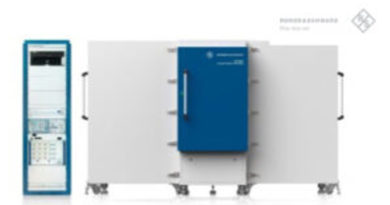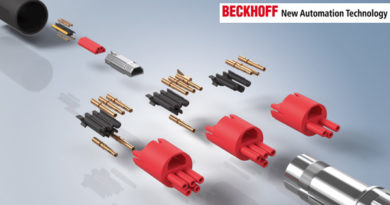WHAT IS ASSET PERFORMANCE MANAGEMENT?

This article will discuss:
- Asset performance management and its importance to industrial processes
- The diverse industrial solutions that can be used to implement optimized asset performance management strategies
- The benefits of implementing an optimized asset performance management framework to the plant floor
Despite the impact of unplanned downtime on productivity across the industrial sector, a majority of plants still rely on the break–fix approach to manage important assets. Studies show that the unplanned downtime cost which arises from the break–fix method is approximately ten times more than the losses accrued from planned downtime periods in which assets are properly evaluated. If your asset management strategy falls within the break–fix category, your business may be unnecessarily losing 1.5% of its annual sales revenue.
What is asset performance management and why is it important for optimizing industrial operations?
To the industrial sector, assets generally refer to the equipment or machines tasked with handling industrial operations. As with most equipment, these assets have life cycles that can be extended through proper asset management. The performance of equipment depends on how it is managed over time, which is where asset performance management comes into the picture.
Gartner provides a comprehensive definition of what asset performance management means. The definition states that: asset performance management encompasses the capabilities of data capture, integration, visualization, and analytics to improve the reliability and availability of physical plant-floor assets. The process of capturing data, visualizing, and analyzing data to deliver optimized asset performance highlights the need for industrial hardware and software to implement asset performance management (APM) strategies. Thus, APM, like most industrial solutions, relies on the digital transformation of traditional processes using digital technologies.
For example, managing a dozen computer numerical control machines requires the hardware – which could be the CNC equipment or a sensor – to capture KPIs produced by the machine. The data must be analyzed, and the analytical results viewed by the end-user. Thus, an industrial platform that supports data storage and utilization of analytical software is required. Finally, the analytical results must be translated for plant operators through visualization hardware and software to provide the insight needed to properly manage an asset.
There are two major purposes of asset performance management: to improve the performance of managed equipment and reduce or eliminate equipment failure. According to research in the National Library of Medicine, malfunctioning equipment is responsible for 272 out of 773 accidents that occur within the plant floor. Although downtime may cause financial losses, equipment failure due to improper management is more harmful to plant-floor activities. Inadequate asset management also leads to deteriorating equipment introducing hazardous materials into the environment which becomes a health hazard for both in-house operators and the public.
What are the industrial solutions for asset performance management?
APM solutions are a suite of tools consisting of hardware, software, and service solutions designed to monitor, manage, and improve the performance of plant-floor assets. Like every digital transformation solution or technology, APM is driven by analytics and relies on data sets captured from integrated plant floor processes. The hardware aspect of APM supports the capture of data from legacy assets and other operations on the plant floor. The software component enables APM to apply pattern recognition, artificial intelligence, and machine learning to gain actionable insight from captured data.
To accurately capture data and ensure everyone is on the same page when visualizing actionable insight, a single source of truth becomes a requirement that can’t be overlooked. For example, the digital platform offered by EXOR International serves as a unified environment that captures data from IoT, edge, and plant-floor equipment into its scalable platform. It provides the tools for analyzing captured data, as well as, supportive features for integrating custom industrial applications into the platform. The scalability of APM solutions ensures enterprises can unify data from an unlimited number of data-producing sources for further analytics.
Which HMI is right for you
The essential industrial solutions APM provides
APM solutions offer essential specialized services, which makes them integral to the digital transformation implementation process of industrial enterprises. These essential solutions include the option to monitor shop-floor assets in real-time, ensuring equipment compliance amongst other benefits. The most important solutions or services it offers include:
♦ Providing a unified view of asset performance – Successful downtime prevention strategies are dependent on the ability to apply predictive analysis and to monitor equipment in real-time. On plant floors with multiple assets, APM serves as an asset performance unification solution that showcases performance data from every asset on the plant floor. The holistic information APM provides supports Industrie 4.0 initiatives such as predictive maintenance and a data-driven production optimization process.
♦ Enabling regulatory compliance during operations – Keeping the plant floor safe for human operators is one of the major reasons for implementing a digital transformation strategy. APM supports the integration of the relevant policies for an individual piece of equipment throughout its operational cycle. The insight obtained from real-time feed data can ensure assets are working within specified standards, thus reducing the possibility of accidents, as well as expensive product recalls.
♦ Evaluating maintenance strategies – Devising an applicable predictive maintenance strategy starts with capturing machine data and includes developing strategies to ensure predictive maintenance policies work. APM provides the supporting data and platform to evaluate multiple predictive maintenance policies. Then more specific solution on Conditional Monitoring and Remote Management need to be implemented to evaluate the related costs, and the repair efforts to prioritize for individual items of equipment. The evaluation process ensures the most cost-effective and high-performance maintenance strategy is selected.
♦ Answers to critical questions – Determining the health of an asset plays an important role in determining why it is performing poorly, which is the foundation for answering many asset-related questions. With knowledge of machine utilization history, maintenance history, and spare parts replacement history, industrial enterprises can set operational schedules and determine throughput to optimize production and increase service levels.
Conclusion

In an age when downtime costs up to $260,000 per hour, APM provides enterprises with a means to reduce unplanned downtime to a minimum at a fraction of this cost. The application of APM must be part of a factory’s wider digital transformation process as it ensures plant-floor assets function at their optimal levels when used.
Exor India P.Ltd.
Office No.1901/02, 19″ Floor,Ambience Court,
Plot no,02,Sector No.19D,Vashi Mumbai-400705,India.
Tel:+912227840422 Email: sales.in@exorint.com
support.in@exorint.com, website: www.exorint.com



